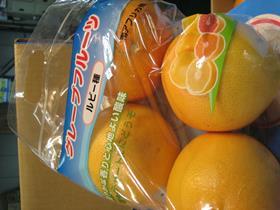
Quality problems have contributed to a longer than usual Southern Hemisphere citrus season in Japan this year, according to local market sources, who predict that supplies will not be sold for another few weeks yet.
Scott Cummings of Goldspan, a major importer of citrus from South Africa, the US and other global sources, said the company did not expect to complete sales of Southern Hemisphere citrus until week 46, three weeks later than originally planned. "The intention had been to have Southern Hemisphere citrus finished by this week, but it's ending up being a very long and difficult season, mainly because of quality problems across all areas," he said. "All varieties and all suppliers have been affected - Chile, South Africa and Australia."
On a brighter note, Mr Cummings predicted that a later start for new season Florida grapefruit arrivals should make for a relatively smooth transition in supplies. "Florida grapefruit will not arrive in volume until week 47 or 48, so the finish should actually be quite a good switch over," he told Fruitnet.
As of last week (week 41), total grapefruit inventories at Japanese ports stood at around 700,000 cartons, compared with 407,486 cartons at the same stage in 2007. According to local trade sources, the market continues to face difficulties from progressing defects on South African fruit, which reflects the generally poor shelf life witnessed on all fruit this year. Fortunately, the Florida grapefruit season has been delayed due to rain and lack of maturity in the fruit. As of week 41, only 80,000 cartons had been shipped out from Florida.
In Japan's lemon market, Chilean shipments have almost come to an end, with the last arrivals expected over the next two weeks. However, inventory levels remain high, with local market reports putting them at 336,957 cartons as of last week, compared with just over 100,000 cartons at this stage last year.
Orange stock levels are also slightly up on last year - standing at 323,328 cartons as of last week, compared with 280,356 cartons in the corresponding week of 2007. However, arrivals of Australian and Chilean navels have reportedly passed their peak, with only limited volumes expected to arrive this month. South African fruit continues to face pitting problems, with product still having to be repacked, according to local industry sources. Nevertheless, the market continues to pay a relative premium for South African oranges compared with those from Chile. While Australian oranges are more expensive, based on the high production costs, they remain popular with some buyers on account of their consistently high internal quality, said market sources.






No comments yet